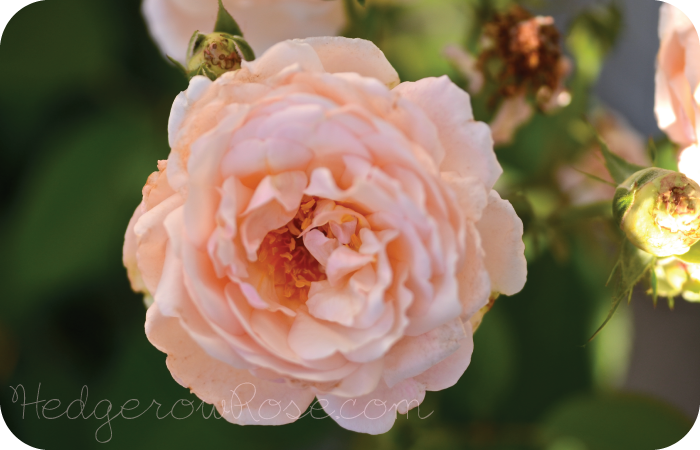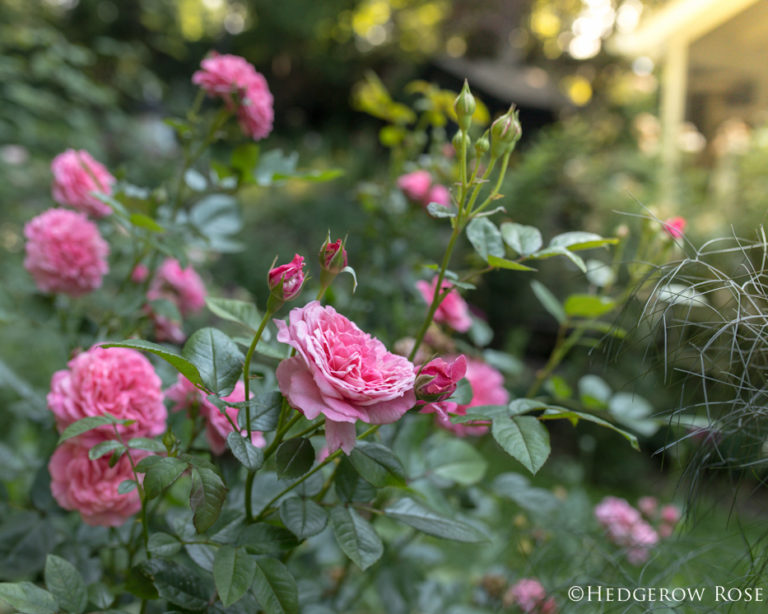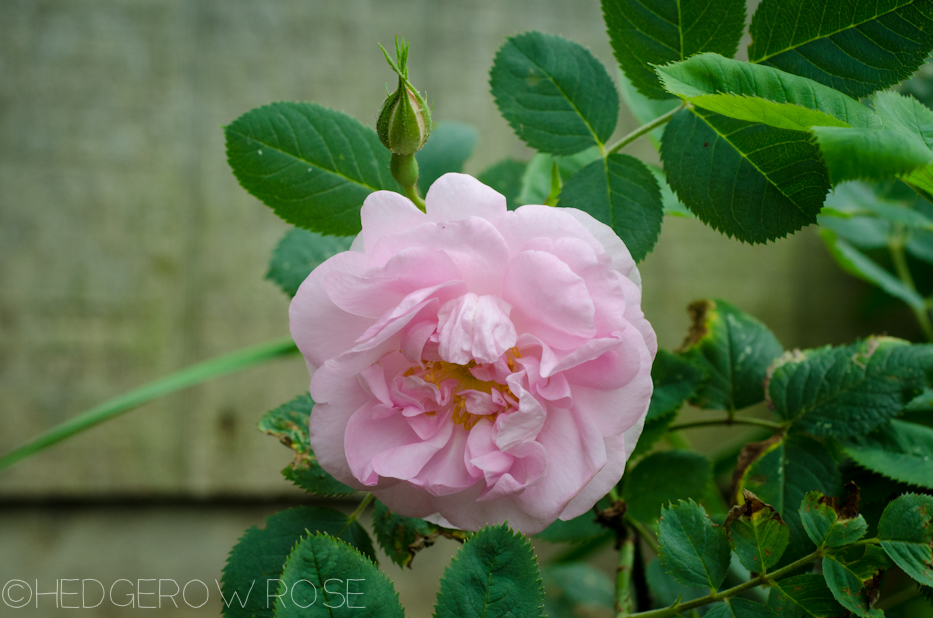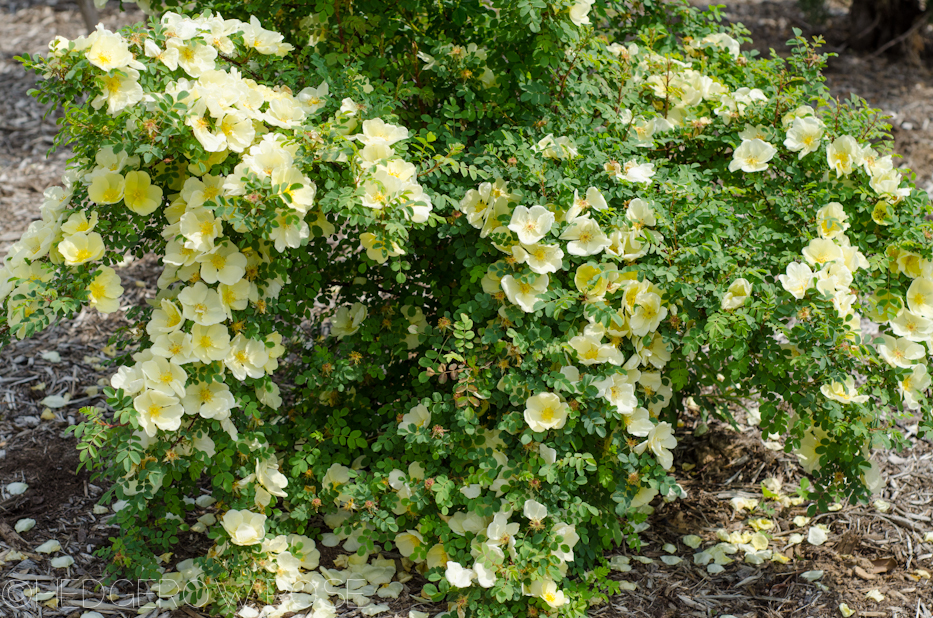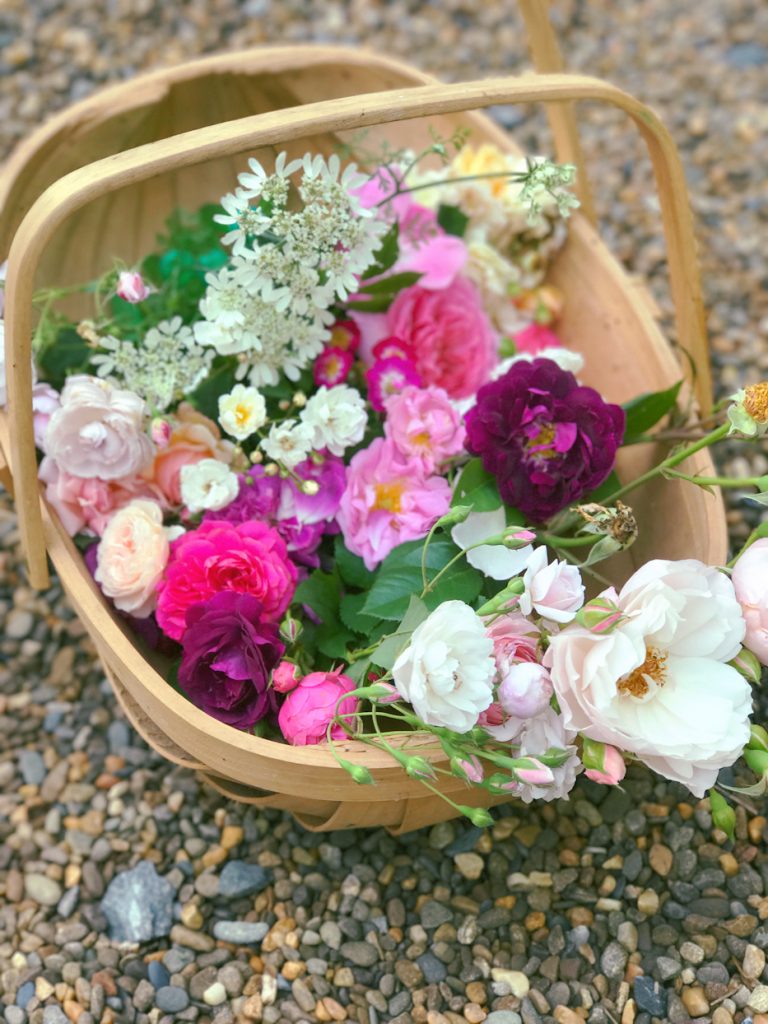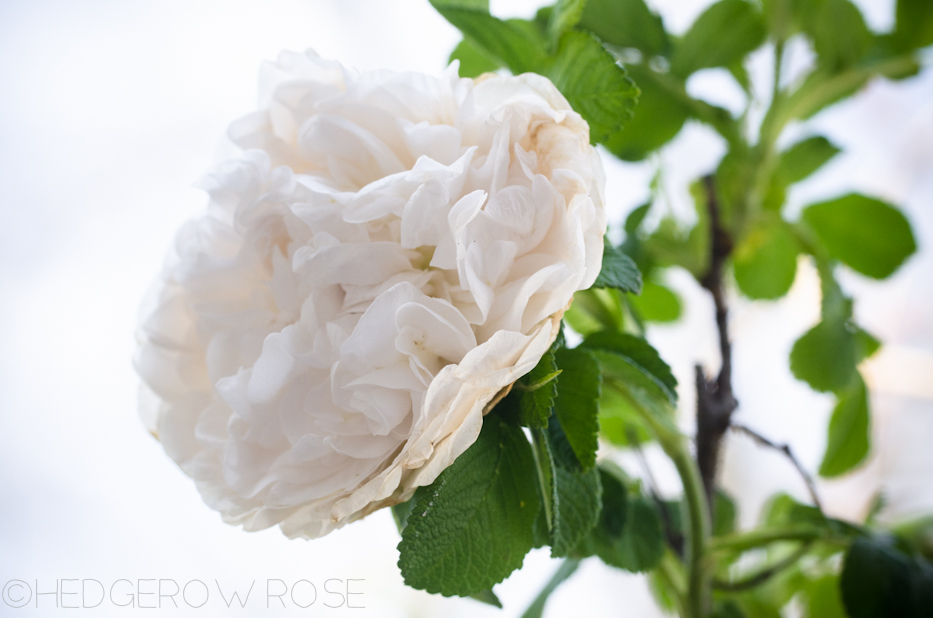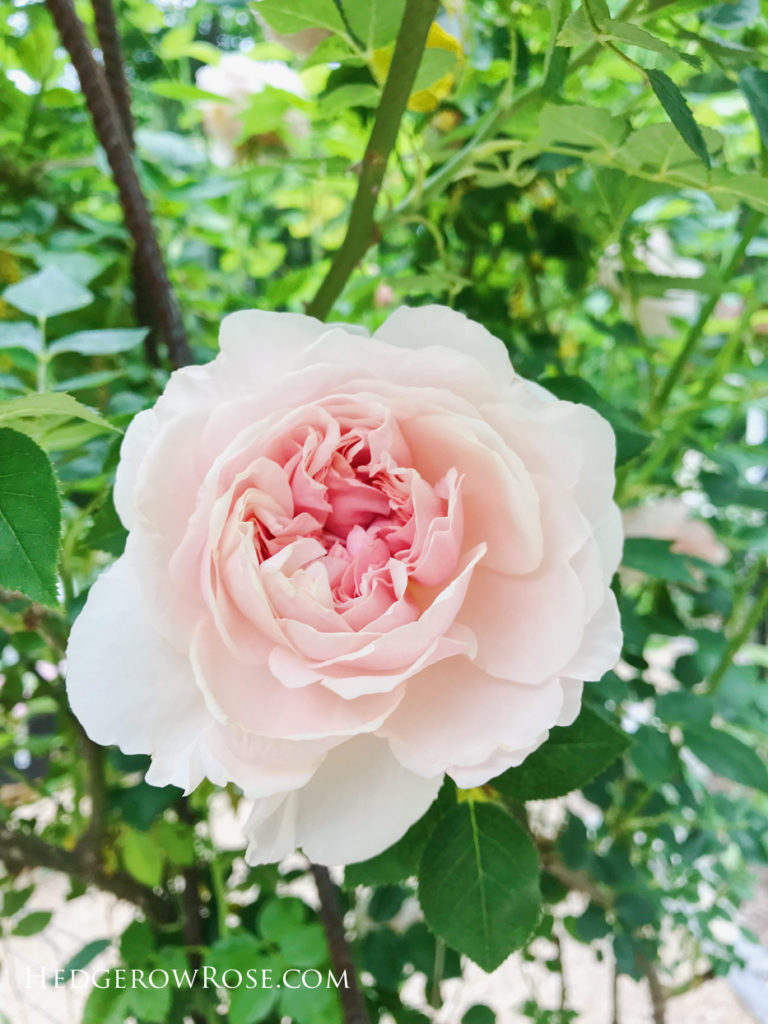Growing ‘Grüss an Aachen’ Floribunda Rose
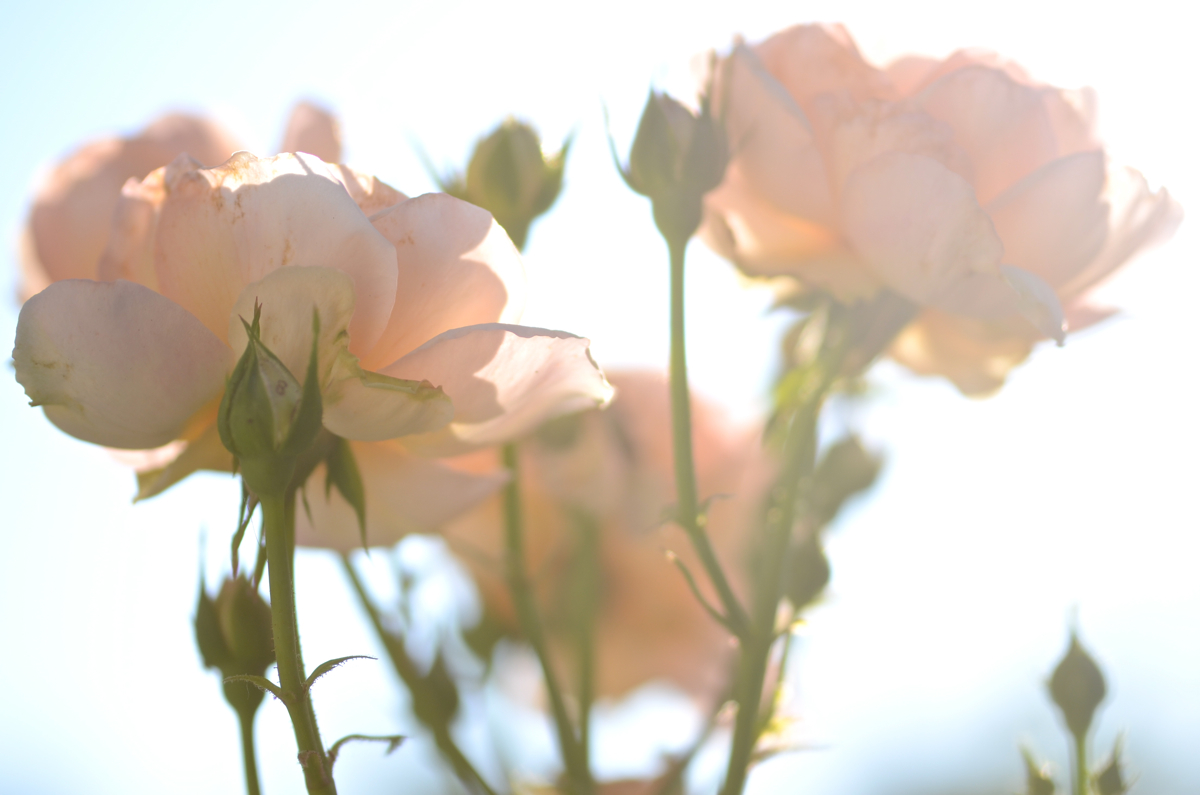
‘Grüss an Aachen’ was bred from the Hybrid Perpetual Frau Karl Druschki, and is recognized to be the first of what is now the repeat-blooming floribunda class.
As we near the end of June and National Rose Month, allow me to share with you a little rose that has been full of big surprises, ‘Grüss an Aachen’: a repeat-blooming rose recognized to be the first of what is now the Floribunda class and now in it’s second season in our garden.
 Like having several different roses on one plant, each blossom on ‘Grüss an Aachen’ vary in color and form from one to the next.
Like having several different roses on one plant, each blossom on ‘Grüss an Aachen’ vary in color and form from one to the next.
‘Grüss an Aachen’ was a rose I purchased, admittedly, for the fun-sounding name. I had no pre-conceived ideas of how it would perform or how it would look, so it’s been an adventure. Initially purchased as a banded plant, I got one tiny bloom from it last summer which I wrote about here on my old blog. As you can see, the blossom looks like it could have been from an entirely different rose, and that is exactly what makes ‘Grüss an Aachen’ so special, to me at least. In it’s second season in our garden, the blossoms it is producing (quite frequently, I might add) look very different from one-another ranging in shades of shell-pink, yellow, peachy-apricot, and even white with sometimes loose, open petals, and sometimes in a tighter formation like a hybrid-tea. Also, depending on the temperature, the colors of each rose vary slightly, too.
 ‘Grüss an Aachen’ is in the Floribunda class, meaning it blossoms are arranged in sprays and blooms repeatedly throughout the growing season.
‘Grüss an Aachen’ is in the Floribunda class, meaning it blossoms are arranged in sprays and blooms repeatedly throughout the growing season.
Bred from the white Hybrid Perpetual Frau Karl Druschki by Philipp Geduldig of Germany and introduced in 1909, Grüss an Aachen was named in honor of the ancient Imperial capital of Charlemagne. A smaller rose, it grows to a height and width of about 3′ and can tolerate shady conditions. In my garden, it prefers morning sun and afternoon shade, and has been extremely disease and pest resistant. Whereas the leaves of some of my David Austin roses are riddled with sawfly larvae holes, or blackspot, my ‘Grüss an Aachen’ rose leaves look show-perfect.
These pictures were taken when the temperatures was quite warm which, I think, brings out the peachy overtones in the roses.
‘Grüss an Aachen’ blooms on new wood so should be pruned early to promote new growth. I’ve seen it being listed as being hardy through zones 6-10 and 4-9. To be safe, colder regions should provide winter protection to prevent die-back. We’re in zone 6, and my ‘Grüss an Aachen’ is planted in a container, so I will be bringing it into the garage this winter. It’s blossoms are double, containing approximately 40 petals and are listed as being very fragrant, but to my nose I find the fragrance to be very light and sweet.
‘Grüss an Aachen’ has a moderate amount of well-spaced thorns, and is a very disease and pest resistant rose in my zone 6 garden.
The American Rose Society has rated ‘Grüss an Aachen’ to be a “very good to excellent” rose. As I write this, ours has just finished it’s first flush of bloom and it pumping out new foliage and new buds for a repeat performance. It’s been a real standout in our garden; I’d say that purchasing it just for it’s name turned out to be a real lucky guess!



